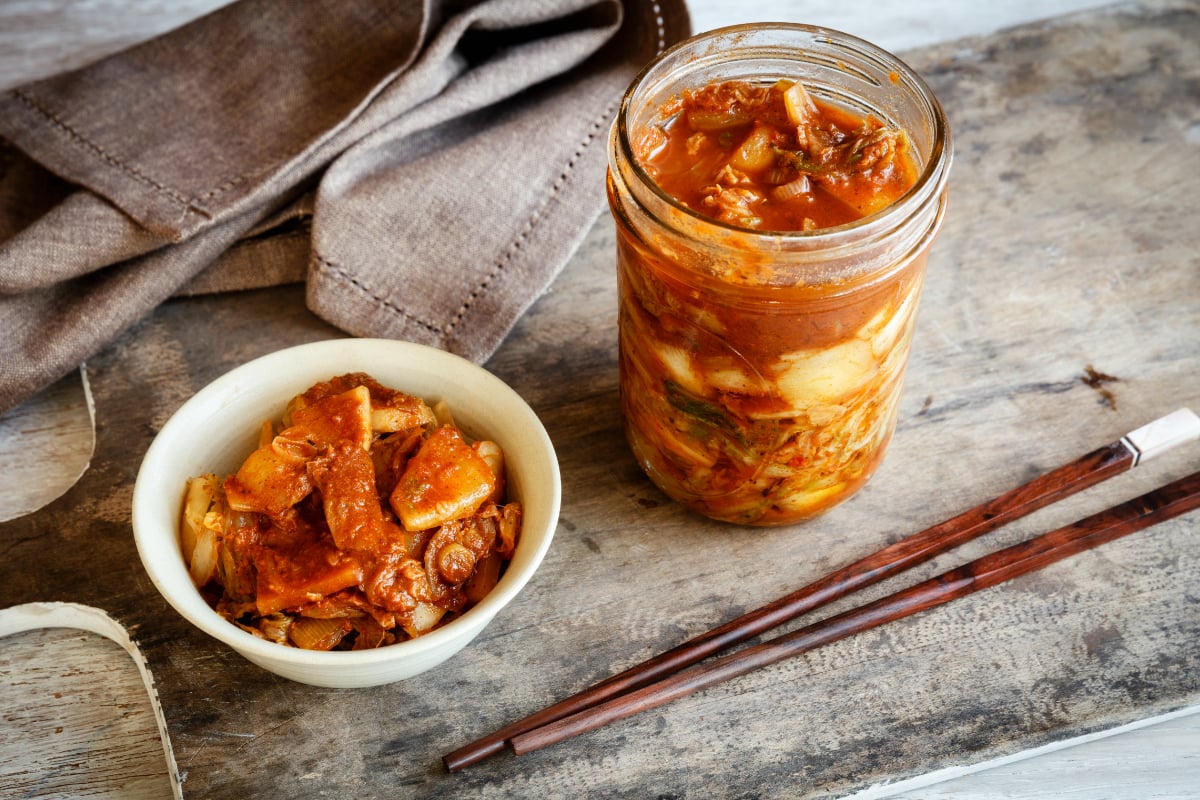
Pop into a trendy restaurant and you’re bound to see kimchi on the menu.
But if you’re wondering “what is kimchi?” you’re not alone. The Korean side dish (or as some call it, a condiment) is made from fermented cabbage. Kimchi has been eaten in Korea for centuries, but in recent years it’s been gaining popularity with everyone else.
What is kimchi?
Kimchi is a tasty condiment or side dish that can be added to many meals. It’s commonly made from cabbage and Korean radishes, but sometimes other vegetables. These veggies are mixed with brining salt and spices and left to ferment at room temperature for a number of days then kept in the fridge to be used.
Like its fermented side dish cousin, sauerkraut, kimchi can be a bit of an acquired taste.
Kimchi has been eaten by people in China and Korea since before 1000AD. Back before refrigeration was widely available, pickling vegetables was a great way to preserve them for eating all year round. Kimchi has evolved a lot since then though and now involves a lot more spices and flavours, including garlic, chilli and ginger.
What are the health benefits of kimchi?
Kimchi has many health benefits, explains nutritionist Elyse Lagos.
“These little power foods not only add extra punch to your meals but also do wonders for your health, particularly, your gut health,” The Natural Nutritionist practice manager writes in her article about fermented food.
“The human gut is made up of a diverse range of bacteria, with over 100 trillion single-celled organisms. This community of microorganisms is known as our ‘gut flora’, which affects mood, mental focus, immune system function, fat storage and vitamin synthesis.”































































































